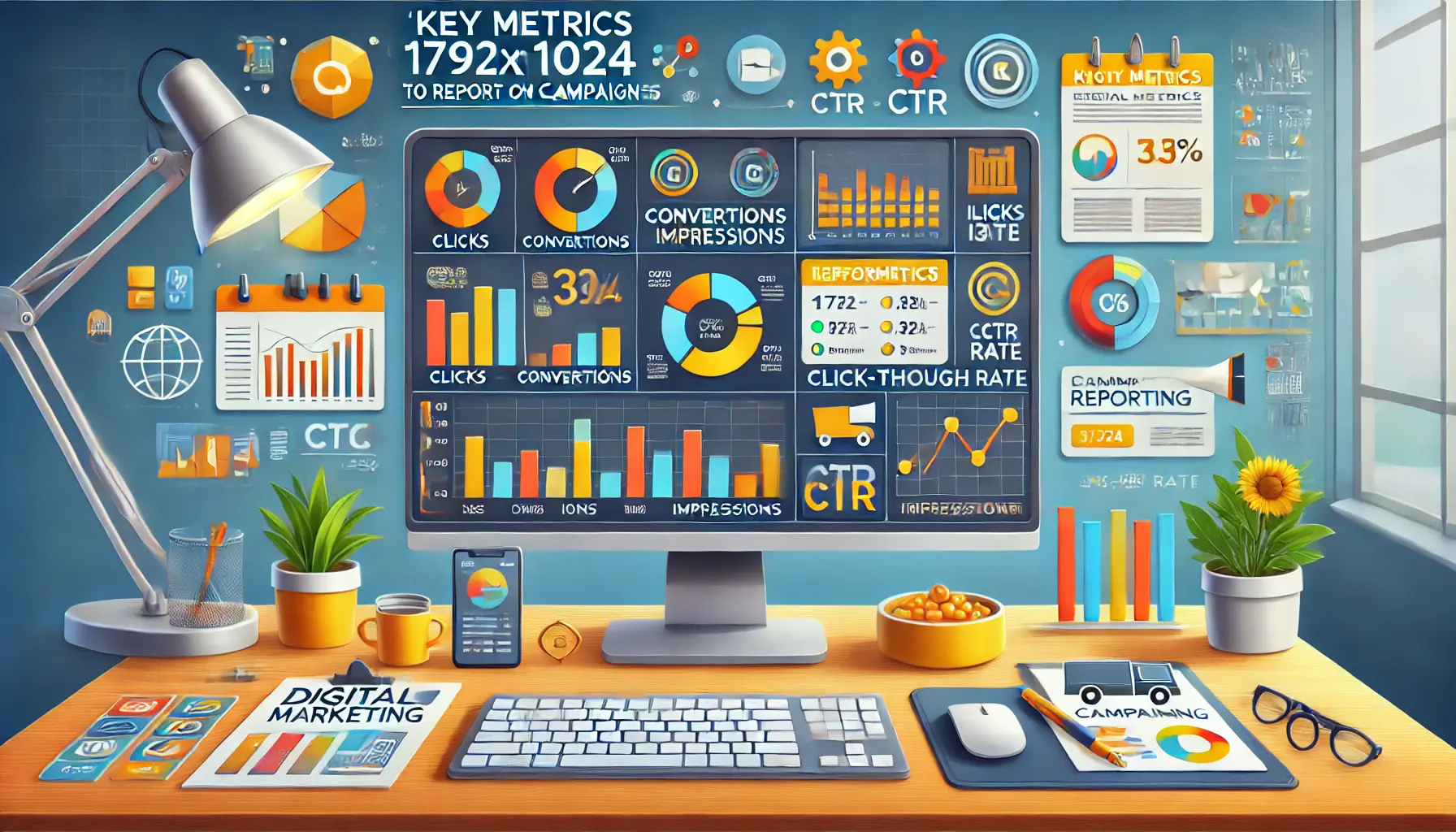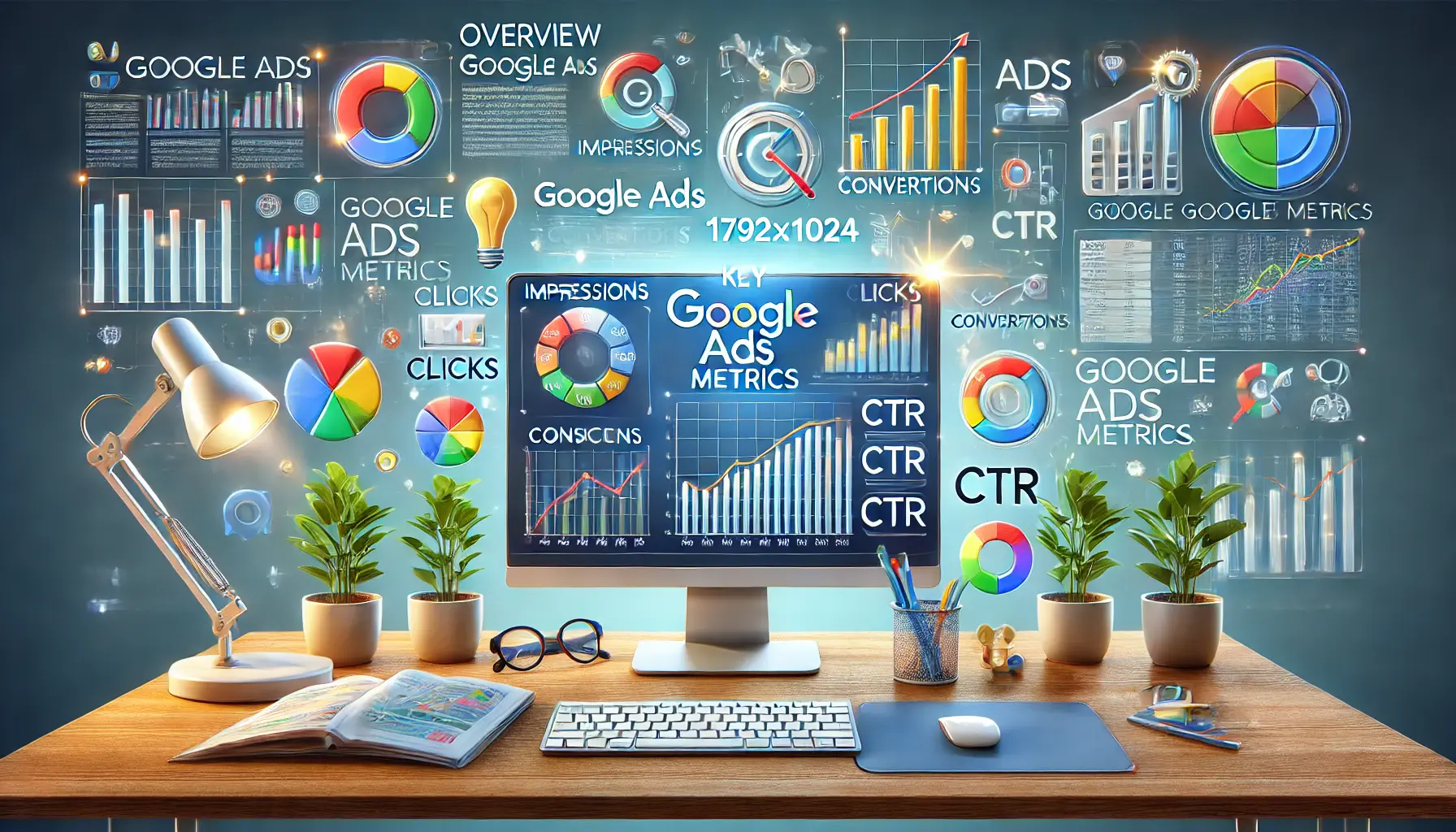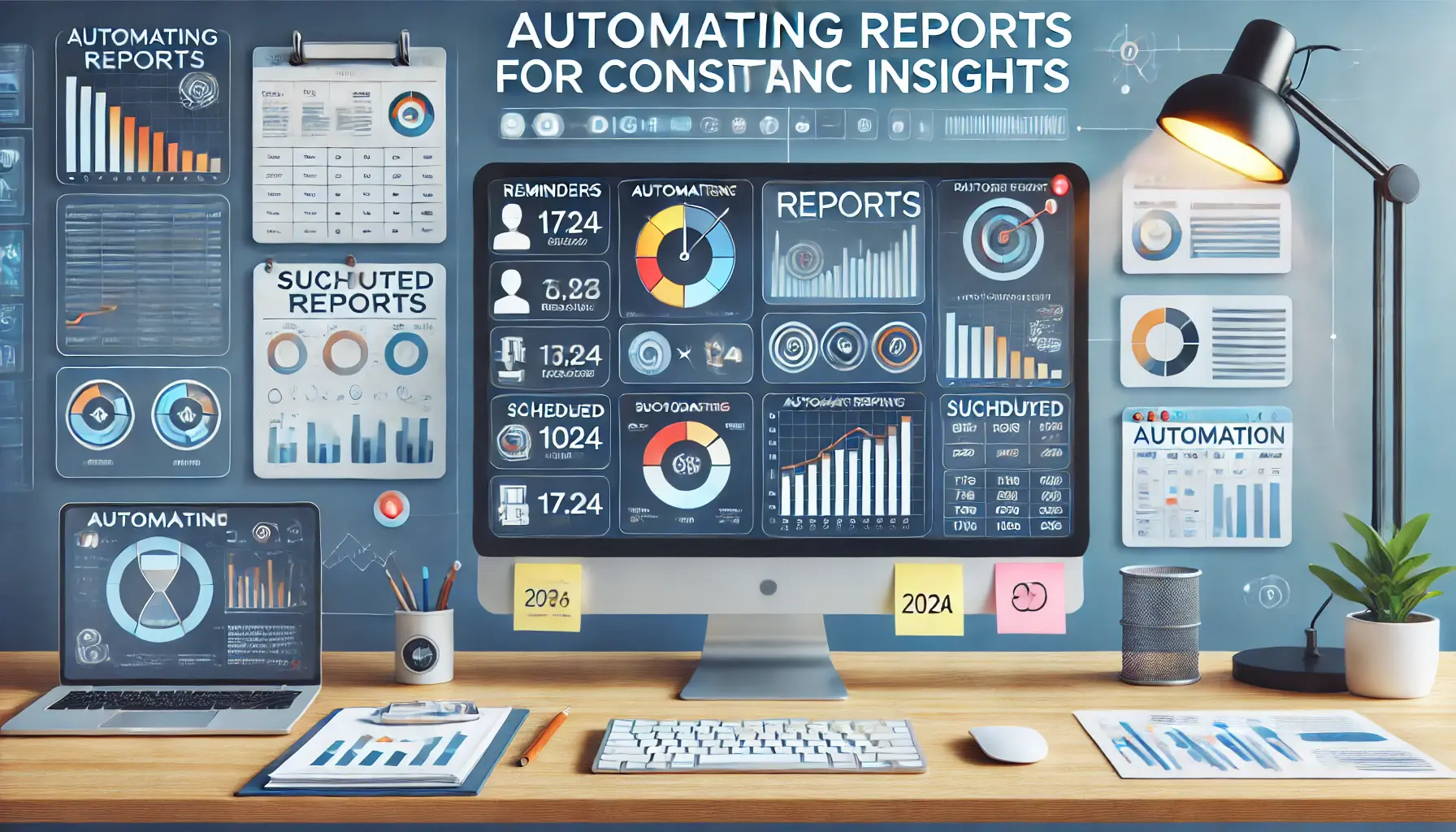Living in a time when every second counts in digital advertising, success and growth can only be guaranteed if you pay due attention to your Google Ads campaigns.
Whether you’re aiming to increase conversions, boost brand awareness, or maximize your ad spend, perfecting Campaign Tracking and Reporting is essential.
By measuring what each campaign brings to your business, following specific metrics, and making informed decisions, you can optimize your advertising strategy.
But where do you even begin, and with what tools?
In this article, we dive deep into the essentials of campaign tracking and reporting within Google Ads, taking you through each step to maximize your ad investments.
The concept of tracking your campaigns effectively involves more than just recording numbers; it’s about insights that empower you to make strategic decisions.
With Google Ads, you can set up robust mechanisms to track key metrics like clicks, conversions, and ROIReturn on Investment, a measure of the profitability of an investment, providing a thorough understanding of your campaign’s performance.
Let’s dive into the first step: understanding campaign tracking in Google Ads and why it matters.
- Understanding Campaign Tracking in Google Ads
- Key Metrics to Report on Campaigns
- Using Google Analytics for Enhanced Tracking
- Advanced Tracking Techniques and Tools
- Best Practices for Campaign Reporting
- Conclusion: Maximizing Success with Effective Campaign Tracking and Reporting
- FAQs on Campaign Tracking and Reporting
Understanding Campaign Tracking in Google Ads
Campaign tracking in Google Ads forms the bedrock of any successful digital marketing effort.
When set up and maintained properly, tracking provides granular data on how users interact with your ads.
It enables you to measure each campaign’s effectiveness and refine strategies with live insights.
Tracking helps you identify what works, what doesn’t, and where you can improve, driving better, data-driven decisions to enhance ad performance.
Image illustrating the significance of precise campaign tracking in digital marketing, featuring a professional office setup.
Importance of Precise Campaign Tracking
Accurate campaign tracking is crucial in determining the true effectiveness of your Google Ads campaigns.
Without proper tracking, you may miss critical data points that reveal user behavior, conversion trends, and return on ad spend.
Effective tracking allows you to:
- Measure campaign success: Understand which campaigns perform best and why.
- Determine conversion sources: Knowing the source of your conversions helps enhance targeting.
- Optimize ad spend: Budget for the highest-performing campaigns.
- Eliminate wasted spend: Remove ineffective campaigns that drain resources.
By focusing on precise tracking, you gain valuable insights to support your marketing objectives and gain a competitive edge.
Image illustrating the process of setting up tracking parameters for online campaigns in digital marketing.
Setting Up Tracking Parameters
Setting up tracking parameters in Google Ads involves creating unique tracking tags and identifiers at the campaign, ad group, or keyword level.
These parameters allow Google Ads to gather and report data on user behavior, interactions, and conversions, helping you gauge each campaign’s performance.
You can set up tracking with URL parameters or by using Google’s auto-taggingA Google Ads feature that automatically tags URLs for tracking feature:
- Manual tagging with UTM parameters: Customize URLs with UTM tags to track source, medium, campaign, and more.
- Auto-tagging: Enable auto-tagging in Google Ads to automatically track clicks and link them to Google Analytics for detailed reporting.
Setting up proper tracking parameters takes time but is essential to ensure data accuracy and usefulness, allowing you to evaluate and refine your campaigns effectively.
Image showcasing the different types of campaign tracking options available in digital marketing.
Types of Campaign Tracking Options
Google Ads offers various campaign tracking options to align with different marketing objectives.
Choosing the right tracking method depends on your goals and how you plan to use the data.
Key tracking options include:
- Conversion tracking: Track user actions such as purchases, sign-ups, and downloads.
- Website call conversions: Track phone calls generated by clicks on your ads.
- Offline conversions: Import data on leads or sales completed offline but initiated through an ad click.
- Cross-device conversions: Measure conversions that happen across multiple devices.
Each tracking option provides valuable data to measure different aspects of campaign performance, allowing you to adjust your strategy as needed.
Image illustrating common tracking errors and their solutions in digital marketing.
Common Tracking Errors and Solutions
Despite best efforts, tracking errors can occur, leading to skewed data.
Common tracking mistakes include misconfigured URL tags, failing to update tracking codes after site changes, and incorrect settings in Google Analytics.
To ensure accurate tracking:
- Double-check tracking tags: Verify that all tags are placed correctly on relevant pages.
- Test tracking links regularly: Confirm that tracking parameters are being recorded.
- Sync with Google Analytics: Ensure Google Ads and Analytics are correctly linked for comprehensive data.
- Update tracking as needed: Review and update tracking codes if your website structure changes.
By addressing these common issues, you can maintain data integrity and make decisions based on accurate information.
Campaign tracking is essential for refining ad strategies and maximizing ROI. Through precise tracking, advertisers can gain insights to make data-driven decisions, enhancing ad performance continuously.

Image illustrating key metrics to report on campaigns in digital marketing analytics.
Key Metrics to Report on Campaigns
Effective campaign reporting in Google Ads consists of understanding and tracking several key metrics that offer insights into your campaign’s performance.
These metrics bring you closer to understanding what works for your campaign and what adjustments may be needed.
Below, we explore the key metrics you can leverage to inform data-driven decisions and optimize your ad spend.

Image illustrating the overview of key Google Ads metrics in digital marketing.
Overview of Key Google Ads Metrics
Google Ads offers a variety of metrics, but a few stand out in tracking the actual performance of your campaign.
Here’s a set of core metrics every advertiser should monitor closely:
- Impressions: The number of times your ad is viewed. High impressions indicate visibility; low engagement may suggest a need to revisit your targeting or creative strategy.
- Clicks: The total clicks on your ad. This metric demonstrates user interest and shows how appealing your ad is to prompt action.
- CTR (Click-Through Rate): The percentage of impressions that resulted in clicks. CTR is a strong indicator of ad relevance and quality.
- Conversions: User actions that align with your campaign objectives, such as purchases, form submissions, or sign-ups.
- Conversion Rate: The percentage of clicks that result in conversions. High conversion rates indicate that your ad resonates well with your target audience.

Image illustrating the measurement of Click-Through Rate (CTR) and conversions in digital marketing.
Measuring Click-Through Rate (CTR) and Conversions
Click-Through Rate (CTR) helps determine the relevance and appeal of your ads.
A high CTR suggests that users are interested in your ad, while a low CTR may indicate a need for better targeting or ad copy adjustments.
Testing ad formats, headlines, or other targeting options can help improve CTR.
Conversions reflect the number of successful actions users take after clicking your ad.
Conversion tracking shows if your campaign objectives, such as sales or sign-ups, are being met.
Setting up conversion tracking in Google Ads is essential to measure these outcomes precisely and optimize effectively.

Image illustrating the analysis of Cost Per Acquisition (CPA) in digital marketing.
Analyzing Cost Per Acquisition (CPA)
Cost Per Acquisition (CPACost Per Acquisition, the cost to acquire a single conversion) represents the average cost of acquiring a conversion.
CPA is particularly useful when you have a specific budget range for acquiring new customers.
It helps assess if your ad spend is efficient in driving conversions and allows you to compare the cost-effectiveness of different campaigns or ad groups.
Optimizing CPA can be achieved by refining your targeting, adjusting bids, or increasing ad relevance and quality.
To maximize return on investment (ROI) without exceeding budget limits, CPA optimization is essential.

Image illustrating the analysis of Return on Ad Spend (ROAS) in digital marketing.
Return on Ad Spend (ROAS) Analysis
Return on Ad Spend (ROASReturn on Ad Spend, a metric showing revenue generated per dollar spent on ads) is one of the most critical metrics for analyzing the profitability of your Google Ads campaigns.
ROAS indicates how much revenue is generated for each dollar spent on ads, helping you understand your financial return on ad investment.
A high ROAS signals a successful campaign, while a low ROAS suggests optimization is needed.
Improving ROAS may involve enhancing ad relevance, focusing on high-performing keywords, and reallocating budget to more profitable campaigns.
ROAS is a powerful metric for identifying high-value campaigns that directly impact your bottom line.
By monitoring and analyzing these key metrics, you can make informed decisions to optimize your campaigns for the best results.
Next, we will discuss how Google Analytics can enhance your tracking and reporting capabilities.
Monitoring impressions, clicks, CTR, conversions, and ROAS is essential for understanding campaign success. These metrics are foundational for assessing and optimizing Google Ads performance.
Image illustrating the use of Google Analytics for enhanced tracking in digital marketing.
Using Google Analytics for Enhanced Tracking
Google Ads is fully equipped with various tools to track campaign performance.
The benefits of using Google Ads alongside Google Analytics are substantial, as Google Analytics provides deeper and more comprehensive data on user behavior on your website—far beyond what Google Ads alone can capture.
This integration allows you to understand what users do after clicking your ad, enabling you to optimize your ad strategy for maximum return on investment.

Image illustrating the integration of Google Ads with Google Analytics in digital marketing.
Integrating Google Ads with Google Analytics
Linking Google Ads to Google Analytics is straightforward and provides an integrated view of ad performance and resulting user behaviors.
To start, link your Google Ads account with Google Analytics within your Google Ads settings.
This integration allows you to see Analytics data directly in Google Ads, offering a more comprehensive picture of campaign performance.
After linking, you can also import Analytics goals into Google Ads, allowing you to track conversions based on specific user actions on your site, such as purchases or form submissions.
By using Google Ads and Google Analytics together, you gain valuable insights into user behavior and conversion patterns, which are essential for refining your advertising strategy.
Image illustrating the process of setting up conversion tracking in Google Analytics.
Setting Up Conversion Tracking in Google Analytics
Conversion tracking through Google Analytics enables you to monitor specific actions taken by users who visit your site from a Google Ads campaign.
To set up conversion tracking, define your goals in Google Analytics, such as a purchase, sign-up, or pageview.
Each goal represents a measurable outcome, helping you evaluate how well your ad campaigns achieve their objectives.
To set up goals in Google Analytics, navigate to the ‘Admin’ section, select ‘Goals,’ and define the actions you want to track.
You can also create custom events using JavaScript or Google Tag ManagerA tag management system to easily update measurement codes for advanced tracking options.
Tracking these conversions in Google Analytics ensures you capture every important user action, providing a complete view of your campaign performance.

Image illustrating the customization of goals for campaign analysis in digital marketing.
Customizing Goals for Campaign Analysis
By using custom goals in Google Analytics, you can go beyond default conversion tracking to measure actions that align with unique business objectives.
With event tracking, you can measure actions such as time spent on a page, video views, or scroll depth, depending on your business needs.
Custom goals are ideal for companies with specialized objectives.
For instance, an e-commerce site might track custom actions like product views or add-to-cart events as goal completions.
By setting up custom goals, you gain tailored insights that help refine your campaigns and optimize for the actions most important to your business.

Image illustrating the process of leveraging analytics reports for insights in digital marketing.
Leveraging Analytics Reports for Insights
Google Analytics provides a variety of reports that are invaluable for analyzing the performance and impact of your Google Ads campaigns.
Key reports include the Audience, Acquisition, and Behavior reports, each offering insights into different aspects of user behavior and campaign performance.
- Audience Report: Provides information on your audience’s demographics, location, interests, and device usage, helping you refine ad targeting.
- Acquisition Report: Shows how users arrive at your site, helping you understand which channels drive the most traffic and conversions.
- Behavior Report: Tracks user interactions on your site, such as page views and session duration, revealing how effectively your site engages visitors.
By leveraging these reports, you can identify strengths and areas for improvement within your campaigns, allowing you to make data-driven adjustments that improve efficiency.
Integrating Google Analytics with Google Ads provides a powerful toolkit for tracking and optimizing your campaigns.
In the next section, we’ll explore advanced options and tools that can further enhance campaign performance tracking.
Google Analytics integration extends Google Ads capabilities, offering in-depth insights into post-click user behavior and conversion paths for a holistic view of ad performance.
Image illustrating advanced tracking techniques and tools in digital marketing.
Advanced Tracking Techniques and Tools
Advanced tracking techniques and tools give a competitive edge to advertisers seeking more in-depth insights to optimize their campaigns on Google Ads.
These methods go beyond basic tracking to capture granular data, allowing you to refine strategies based on specific user interactions.
Here, we explore some advanced tracking methods you can use to enhance campaign performance.
Image illustrating the use of UTM parameters for advanced tracking in digital marketing.
Using UTM Parameters for Advanced Tracking
UTM parameters allow you to track the specific source and behavior of traffic, enabling a better understanding of your audience’s journey.
Adding UTMUrchin Tracking Module, a format for tracking parameters in URLs parameters to URLs shows where campaign sources, mediums, and content originate, helping drive engagement and conversions.
To set up UTM parameters, use Google’s Campaign URL Builder, which generates a URL with embedded parameters of your choice.
Parameters like utm_source, utm_medium, utm_campaign, and utm_content can be added to track details of each click.
By using UTM parameters, you can analyze performance more precisely in Google Analytics and better attribute traffic to specific campaigns.
Image illustrating the implementation of dynamic tracking for campaigns in digital marketing.
Implementing Dynamic Tracking for Campaigns
Dynamic tracking allows advertisers to create tracking tailored to variables like device, location, or user demographics.
By incorporating dynamic URL parameters, you can capture more specific information on how different audience segments interact with your ads.
Google Ads supports dynamic tracking through ValueTrackParameters in Google Ads URLs that capture specific information about clicks parameters, customizable URL parameters that adapt to specific conditions for each ad click.
With ValueTrack parameters, you can track metrics such as the user’s device, location, ad position, and keyword.
For example, adding the parameter {device} to your URL captures the device type for each click, allowing you to see if mobile, desktop, or tablet users respond differently to your ads.
This granular data can help refine your targeting and bidding strategies.

Image illustrating the exploration of attribution models in Google Ads for digital marketing.
Exploring Attribution Models in Google Ads
Attribution modeling allows you to assign credit to different touchpoints in a user journey, helping you understand the role each ad plays in driving conversions.
Google Ads offers several attribution models, including Last Click, First Click, Linear, Time Decay, and Data-Driven, each interpreting ad impact differently.
The attribution modelA framework for assigning credit to ad interactions leading to conversions you choose depends on your business goals.
For example, if you want to give credit to the first interaction, the First Click model may suit your needs.
Alternatively, the Data-Driven model uses machine learning to distribute credit based on actual paths to conversion and is available only for accounts with enough conversion data.
By experimenting with different models, you can better understand the value of each touchpoint and optimize accordingly.
Image illustrating the use of Google Tag Manager for improved tracking in digital marketing.
Using Google Tag Manager for Better Tracking
Google Tag Manager (GTM) is a powerful tool that simplifies the management and setup of website tracking tags.
With GTM, you can add, modify, or update tracking tags without needing to edit your site’s code directly, making testing and optimization much easier.
GTM supports several tag types, including Google Ads, Google Analytics, and third-party tracking pixels.
You can also set up custom triggers to capture actions such as button clicks or form submissions and send that data to Google Analytics or Google Ads.
Using GTM streamlines tracking and provides more flexibility to capture valuable data points for analysis and optimization.
Advanced tracking techniques and tools allow you to capture a richer set of data, providing more detailed analyses of user interactions and campaign performance.
In the final section, we’ll discuss best practices in campaign reporting, including how to create actionable reports and insights.
Advanced tracking methods like UTM tagging, dynamic tracking, and Google Tag Manager capture detailed data, enabling more effective and granular ad performance evaluations.

Image illustrating best practices for effective campaign reporting in digital marketing.
Best Practices for Campaign Reporting
Effective campaign reporting in Google Ads involves more than just tracking metrics; it’s about turning data into actionable insights.
Following best practices for campaign reporting allows you to create reports that not only summarize performance but also offer clear guidance on optimizing future campaigns.
Here are some key practices to help drive effective campaign reporting and maximize the value of your Google Ads data.

Image illustrating the process of creating comprehensive campaign reports in digital marketing.
Creating Comprehensive Campaign Reports
A comprehensive report provides a clear overview of your campaign’s performance, helping stakeholders understand the results.
Key metrics to include are impressions, clicks, CTR, conversions, CPA, and ROAS.
To make reports more accessible, use charts or graphs to illustrate trends in performance over time.
Organize your reports in a logical flow, starting with a big-picture overview and then drilling into specific metrics.
This structure saves time and makes it easier for others, especially stakeholders unfamiliar with Google Ads metrics, to interpret the data.

Image illustrating the visualization of data using Google Data Studio in digital marketing.
Visualizing Data with Google Data Studio
Google Data Studio is a powerful tool for visualizing your Google Ads data and creating dynamic, customized reports.
You can combine multiple data sources, such as Google Analytics and Google Ads, or other third-party tools, into a single interactive dashboard, allowing you to gain a fuller perspective of your campaign performance.
With Data Studio, you can create custom dashboards with charts, tables, and filters to analyze data in real-time.
For example, you can set up charts to compare the performance of different campaigns or display trends over time.
Data Studio’s interactivity also enables you to zoom in on specific metrics to identify trends and areas for improvement.

Image illustrating the automation of reports for consistent insights in digital marketing.
Automating Reports for Consistent Insights
Automating your campaign reports ensures you receive regular insights without manually pulling data.
Google Ads allows you to schedule recurring reports, which can be delivered via email daily, weekly, or monthly, depending on your needs.
Automated reporting saves time and keeps you consistently updated on campaign performance.
Automation also reduces the risk of errors in data collection, allowing you to focus on analyzing results rather than gathering data.
Use automation to stay consistently on top of key metrics, making it easier to spot trends or anomalies that may require immediate attention.

Image illustrating tips for effective report analysis and optimization in digital marketing.
Tips for Effective Report Analysis and Optimization
Analyzing reports is essential for campaign optimization.
Here are some tips for interpreting data and implementing changes:
- Identify trends: Monitor CTR, conversions, and CPA over time to see what’s working and what isn’t.
- Segment data: Break down data by audience, device, or location to identify the best-performing segments and adjust targeting accordingly.
- Benchmark performance: Compare your results against industry benchmarks or previous campaign performance to gauge how well you’re meeting expectations.
- Test and adjust: Based on your analysis, try new ad copy, bidding strategies, or targeting settings to enhance performance.
Regularly analyzing and optimizing your Google Ads campaigns with data-driven insights enables you to maintain strong performance and achieve your advertising goals.
By following these best practices, you can leverage reporting to its full potential, ensuring each campaign builds on past success.
Implementing these campaign reporting practices will help you make informed decisions and optimize your Google Ads strategy for maximum impact.
Effective campaign reporting combines tracking metrics with actionable insights, ensuring ongoing ad optimization and strategic decision-making.
Image illustrating the conclusion of maximizing success through effective campaign tracking and reporting in digital marketing.
Conclusion: Maximizing Success with Effective Campaign Tracking and Reporting
In today’s fast-paced digital advertising world, understanding and optimizing your Google Ads campaigns through Campaign Tracking and Reporting is essential for delivering results and continually improving ROI.
From setting up a robust tracking system to utilizing advanced tools and best practices, this process empowers you to make data-informed decisions, refine your ad strategy, and achieve your business objectives.
Image illustrating the key takeaways for campaign tracking and reporting in digital marketing.
Campaign Tracking and Reporting: Key Takeaways
This article covered several key steps to enhance campaign performance in Google Ads.
Below are some of the essential takeaways:
- Set up detailed tracking: Ensure your campaign is tracked accurately by defining key metrics like impressions, clicks, and conversions for a granular understanding of performance.
- Apply Google Analytics integration: Enhance tracking insights by linking Google Ads with Google Analytics for a comprehensive view of user activities on your site.
- Utilize advanced tracking: Use UTM and ValueTrack parameters or Google Tag Manager to capture granular insights into audience interactions and campaign performance.
- Choose appropriate attribution models: Select attribution models that align with your business goals to better understand the impact of each ad interaction on conversions.
- Automate and visualize reports: Create efficient reporting workflows with Google Data Studio for real-time insights and set up automated Google Ads reports for consistent updates.

Image illustrating the process of building a data-driven campaign strategy in digital marketing.
Building a Data-Driven Campaign Strategy
Effective campaign tracking and reporting form the backbone of any data-driven advertising strategy.
By analyzing performance metrics continuously, you’ll be better equipped to identify trends, respond to user behaviors, and adjust campaigns for maximum impact.
Tools like Google Analytics and Google Data StudioA data visualization tool for creating custom reports enable you to interpret and visualize data, making it easier to present results to stakeholders and further optimize your approach.
As you refine your strategy, remember that Campaign Tracking and Reporting is not a one-time process.
Regularly review your data, test new strategies, and adapt to changing market conditions to remain competitive.
This proactive approach ensures your campaigns remain aligned with objectives, setting you up for ongoing success and enabling you to reach new performance levels.

Image illustrating the final thoughts and reflections in digital marketing.
Final Thoughts
By applying the practices discussed in this article to leverage the full potential of Google Ads, combined with insightful tracking and reporting, you’ll position yourself ahead of the competition.
Whether you’re optimizing ad spend, analyzing audience behavior, or exploring advanced tracking techniques, these strategies will help you make informed decisions that support sustainable growth.
In short, mastering Campaign Tracking and Reporting transforms you from a passive tracker of success into an active contributor to it.
With the right tools and a commitment to continuous improvement, you’ll turn data into actionable insights that drive better outcomes, ensuring your campaigns deliver the value your business needs.
Thorough campaign tracking and reporting lay the foundation for a data-driven strategy, helping marketers achieve sustainable growth and improved ROI.
Image illustrating frequently asked questions on campaign tracking and reporting in digital marketing.
Your campaigns can be managed by an agency specialized in Google Ads, check out our service page.
FAQs on Campaign Tracking and Reporting
Below are some commonly asked questions about campaign tracking and reporting in Google Ads.
These answers provide a quick look at the most important aspects of tracking and optimizing your campaigns for better performance and ROI.
Campaign tracking in Google Ads allows you to monitor key metrics like impressions, clicks, and conversions, enabling you to assess performance and make data-driven decisions for campaign optimization.
Integrating Google Analytics with Google Ads provides deeper insights into user behavior, tracking actions on your site.
This integration helps you drive engagement and conversions effectively.
UTM parameters are tracking tags added to URLs.
They help identify traffic source, medium, and campaigns, allowing you to see which ad efforts drive the most engagement and conversions.
ValueTrack parameters are customizable tags that collect granular data on device, location, ad position, and more, offering detailed insights into ad interactions.
Attribution models allocate credit across various touchpoints in a customer’s journey, helping you understand which ads contribute most to conversions.
You can schedule automated reports in Google Ads to be delivered via email on a recurring basis, ensuring updated insights without the need for manual data pulls.
Return on Ad Spend (ROAS) measures revenue per dollar spent on ads, serving as a crucial metric for assessing profitability and optimizing budget allocation.
Google Data Studio enables users to create customized real-time reports with interactive dashboards, allowing you to visualize and analyze data from Google Ads efficiently.
Custom goals track specific actions aligned with business objectives, like product views or video engagement, providing unique insights to optimize ad campaigns.










